American Experience - Season 31

Season 31

Episodes
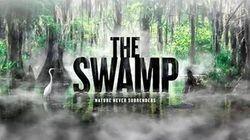
The Swamp
The Swamp tells the dramatic story of humanity's attempts to conquer the Florida Everglades, one of nature's most mysterious and unique ecosystems. Home to a profusion of plants and animals found nowhere else on the continent, the Everglades was an immense watershed covering the southern half of the Florida peninsula. In the 19th century, however, most Americans believed swamps were filled with diseases and noxious reptiles and saw them as obstacles to the nation's progress. The idea of draining the Everglades became the goal of many entrepreneurs, politicians and salesmen who saw great potential in turning the massive wetland into a profitable enterprise. Altering the landscape of the Everglades unleashed a torrent of unintended consequences, from catastrophic floods to brutal droughts. Told through the lives of a handful of colorful and resolute characters, from hucksters to politicians to unlikely activists, The Swamp explores the repeated efforts to transform what was seen as a vast and useless wasteland into an agricultural and urban paradise, ultimately leading to a passionate campaign to preserve America's greatest wetland.
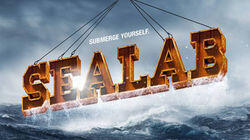
Sealab
On a February day in 1969, off the shore of northern California, a US Navy crane carefully lowered 300 tons of metal into the Pacific Ocean. The massive tubular structure was an audacious feat of engineering — a pressurized underwater habitat, complete with science labs and living quarters for an elite group of divers who hoped to spend days or even months at a stretch living and working on the ocean floor. The Sealab project, as it was known, was the brainchild of Captain George Bond, a country doctor turned naval pioneer who dreamed of pushing the limits of ocean exploration the same way NASA was pushing the limits of space exploration. As Americans were becoming entranced with the effort to land a man on the moon, these Navy "Aquanauts," including one of NASA's most famous astronauts, Scott Carpenter, were breaking depth barrier records underwater. "Sealab" tells the little-known story of the daring program that tested the limits of human endurance and revolutionized the way humans explore the ocean.
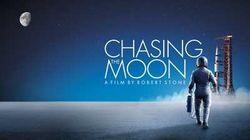
Chasing the Moon: A Place Beyond the Sky
Part one begins in 1957 and tracks the early years of the space race as the United States struggles to catch up with the Soviet Union. The episode reveals breathtaking failures and successes of the nascent American space program and demonstrates the stakes and costs of reaching the moon.
"Chasing the Moon," a film by Robert Stone, reimagines the race to the moon for a new generation, upending much of the conventional mythology surrounding the effort. The series recasts the Space Age as a fascinating stew of scientific innovation, political calculation, media spectacle, visionary impulses, and personal drama. Utilizing a visual feast of previously overlooked and lost archival material — much of which has never before been seen by the public — the film features a diverse cast of characters who played critical roles in these historic events. Among those included are astronauts Buzz Aldrin, Frank Borman and Bill Anders; Sergei Khrushchev, son of the former Soviet premier and a leading Soviet rocket engineer; Poppy Northcutt, a 25-year old "mathematics whiz" who gained worldwide attention as the first woman to serve in the all-male bastion of NASA's Mission Control; and Ed Dwight, the Air Force pilot selected by the Kennedy administration to train as America's first black astronaut.
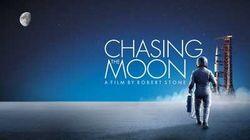
Chasing the Moon: Earthrise
Part two covers 1964–1968, four heady, dangerous years in the history of the space race, focusing on the events surrounding the Apollo 1 and Apollo 8 missions. As Americans moved through the 60s and reflect on the challenges ahead, many begin to wonder: What exactly is it going to take to beat the Soviets to the moon?
"Chasing the Moon," a film by Robert Stone, reimagines the race to the moon for a new generation, upending much of the conventional mythology surrounding the effort. The series recasts the Space Age as a fascinating stew of scientific innovation, political calculation, media spectacle, visionary impulses, and personal drama. Utilizing a visual feast of previously overlooked and lost archival material — much of which has never before been seen by the public — the film features a diverse cast of characters who played critical roles in these historic events. Among those included are astronauts Buzz Aldrin, Frank Borman and Bill Anders; Sergei Khrushchev, son of the former Soviet premier and a leading Soviet rocket engineer; Poppy Northcutt, a 25-year old "mathematics whiz" who gained worldwide attention as the first woman to serve in the all-male bastion of NASA's Mission Control; and Ed Dwight, the Air Force pilot selected by the Kennedy administration to train as America's first black astronaut.
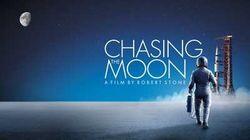
Chasing the Moon: Magnificent Desolation
Part three, which covers 1969–1970, takes Americans to the moon and back. Dreams of space dramatically intersect with dreams of democracy on American soil, raising questions of national priorities and national identity. The final episode also considers what happens to scientific and engineering programs—and to a country—after ambitious national goals have been achieved.
"Chasing the Moon," a film by Robert Stone, reimagines the race to the moon for a new generation, upending much of the conventional mythology surrounding the effort. The series recasts the Space Age as a fascinating stew of scientific innovation, political calculation, media spectacle, visionary impulses, and personal drama. Utilizing a visual feast of previously overlooked and lost archival material — much of which has never before been seen by the public — the film features a diverse cast of characters who played critical roles in these historic events. Among those included are astronauts Buzz Aldrin, Frank Borman and Bill Anders; Sergei Khrushchev, son of the former Soviet premier and a leading Soviet rocket engineer; Poppy Northcutt, a 25-year old "mathematics whiz" who gained worldwide attention as the first woman to serve in the all-male bastion of NASA's Mission Control; and Ed Dwight, the Air Force pilot selected by the Kennedy administration to train as America's first black astronaut.

Woodstock: Three Days that Defined a Generation
In August 1969, nearly half a million people gathered at a farm in upstate New York to hear music. What happened over the next three days, however, was far more than a concert. It would become a legendary event, one that would define a generation and mark the end of one of the most turbulent decades in modern history. Occurring just weeks after an American set foot on the moon, the Woodstock music festival took place against a backdrop of a nation in conflict over sexual politics, civil rights, and the Vietnam War. A sense of an America in transition—a handoff of the country between generations with far different values and ideals—was tangibly present at what promoters billed as "An Aquarian Exposition: 3 Days of Peace and Music."
Woodstock turns the lens back at the audience, at the swarming, impromptu city that grew up overnight on a few acres of farmland. What took place in that teeming mass of humanity — the rain-soaked, starving, tripping, half-a-million strong throng of young people — was nothing less than a miracle of teamwork, a manifestation of the "peace and love" the festival had touted and a validation of the counterculture's promise to the world. Who were these kids? What experiences and stories did they carry with them to Bethel, New York that weekend, and how were they changed by three days in the muck and mire of Yasgur's farm?
Recently Updated Shows

The Creep Tapes
Based on a collection of videotapes in the secret vault of the world's deadliest and most socially uncomfortable serial killer, who hires his victims to film him for the day under false pretenses, each episode exposes a new victim from one of the fabled 'Creep Tapes'.

America's Funniest Home Videos
ABC's longest-running primetime entertainment show, America's Funniest Home Videos, returns for season 36 this fall with the same mission -- giving families something genuinely funny to enjoy together on Sunday nights.
"AFV," the longest-running primetime entertainment show in ABC history, returns for season 36 with the same mission - to provide viewers with hysterical moments that fly by at a dizzying pace.

The Real Housewives of Potomac
Just up the river from our nation's capital lies a hidden gem—Potomac, Maryland. Its rolling hills, gated mansions, sophisticated prep schools, and exclusive country clubs all serve to keep the area invitation-only. Sprinkled throughout this community are a handful of old-line, wealthy African-American families who have historically broken racial barriers to provide a life of privilege for their children. The Real Housewives of Potomac follows the upscale lives of six intriguing, well-to-do women: Gizelle Bryant, Katie Rost, Karen Huger, Charrisse Jackson-Jordan, Robyn Dixon, and Ashley Darby, all of whom have fought for their places in this society by way of legacy or marriage. In a town where entry is granted only through class, pedigree, and lineage, how far will these ladies go to secure their spot at the top of this prestigious circle?

The Traitors Canada
Follow a group of contestants – including some familiar faces – who live together as they complete a series of challenges with the goal of earning a cash prize. The catch? Some of the contestants are traitors who will attempt to deceive and manipulate their way to the prize instead of sharing it amongst the group. In this psychological adventure will the traitors be unmasked in time?
